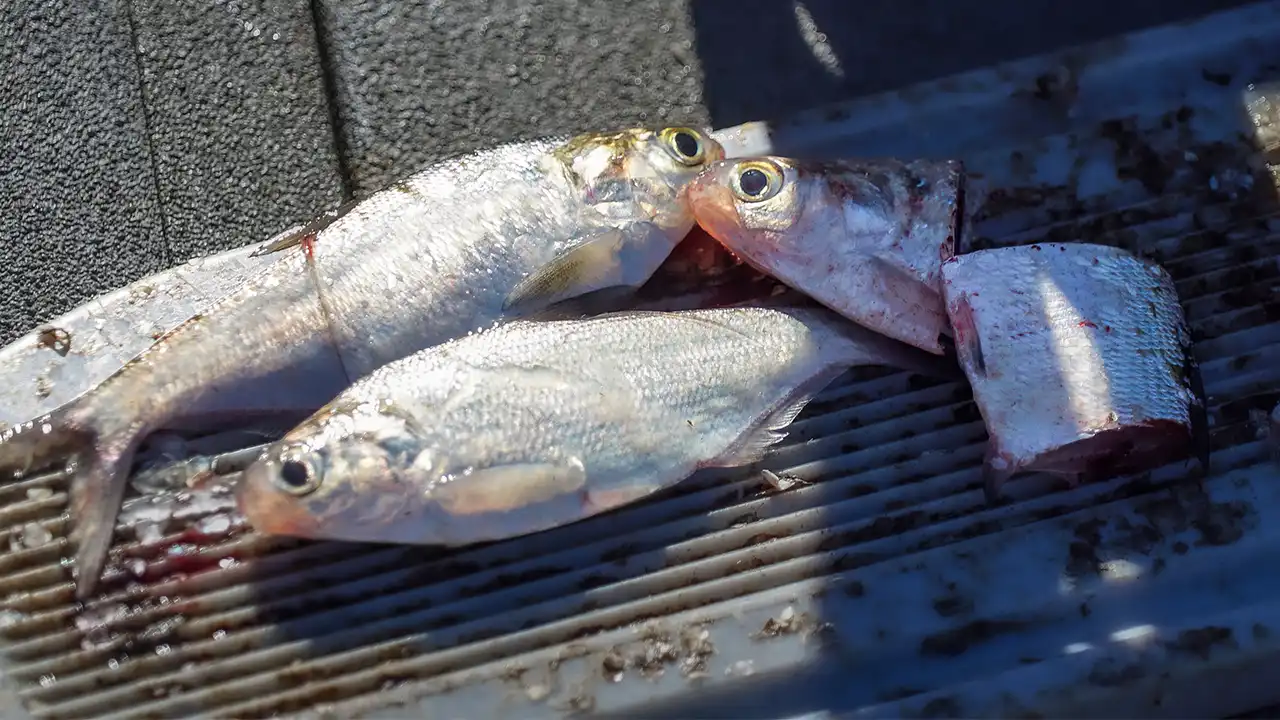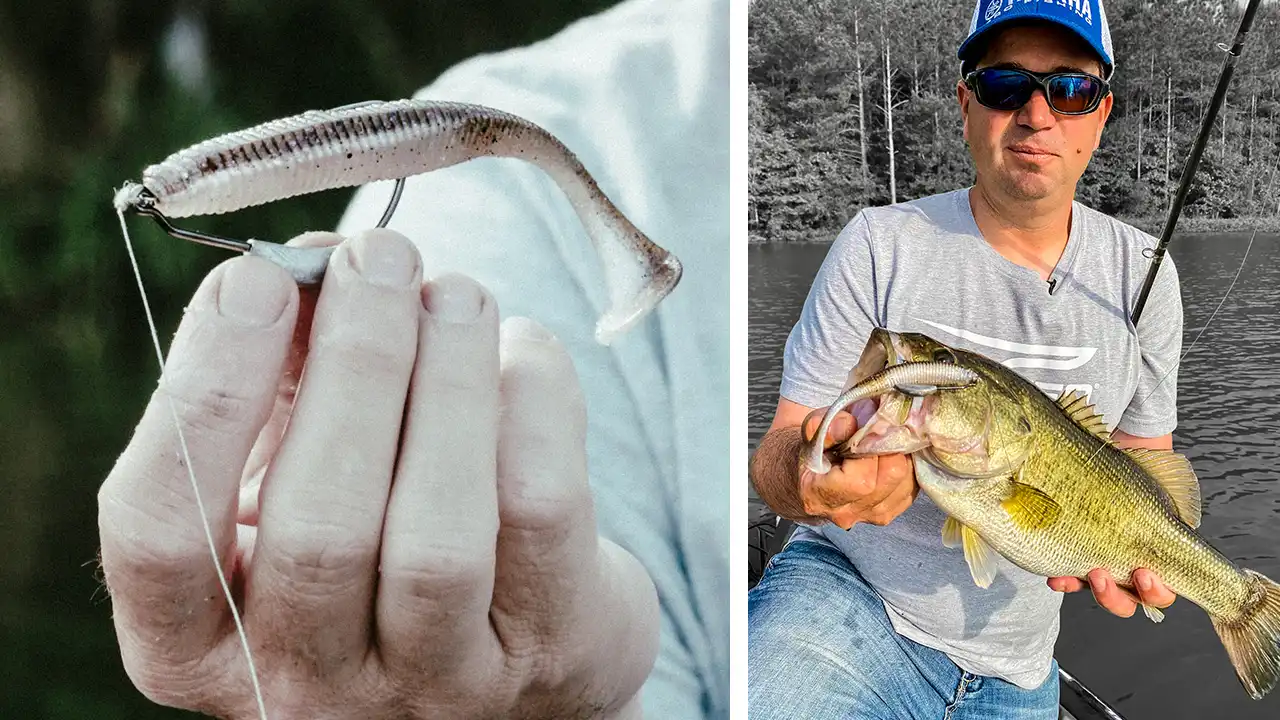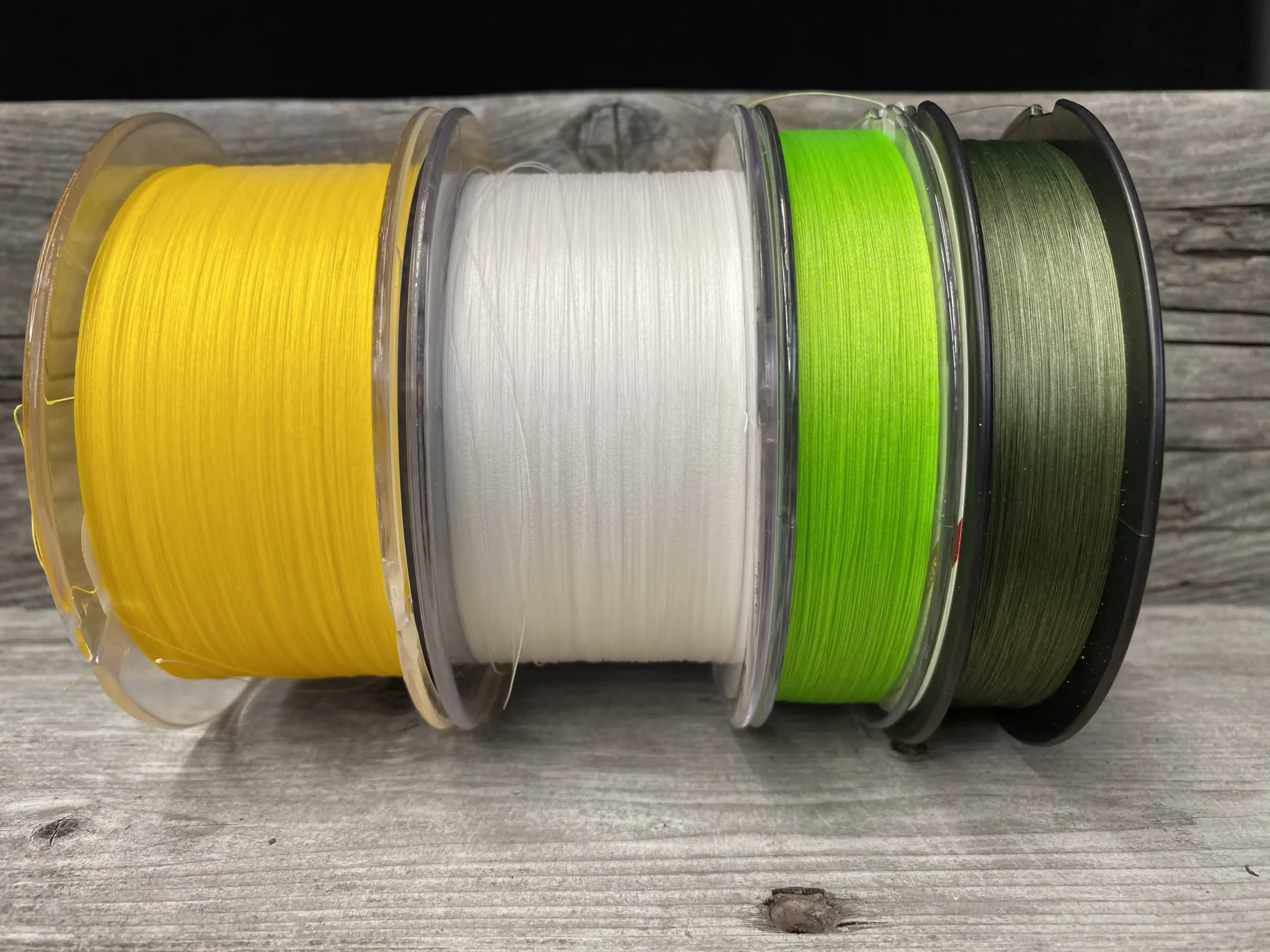The Storm Wiggle Wart series is a classic crankbait lineup that originated in the Ozarks and quickly grew in popularity for bass throughout the country. Bassmaster Elite Series pro Cody Huff returns to his roots and gives us a well-rounded lesson on how to fish Wiggle Warts for bass. He covers a range of topics spanning how, where, and when to fish Wiggle Warts, as well as his preferred rod, reel, and line setup for this obnoxious, noise-making plug.
WHERE TO FISH THE WIGGLE WART
The Wiggle Wart represents beating the bank at its finest. It’s a hard-charging and hunting crankbait that generates bites when it detects off of structure and cover. So where to fish the Wiggle Wart is, at its most basic, any good-looking shoreline. Drop the trolling motor and go. Digging a little deeper, the best place to fish the Wiggle Wart depends on the time of year. To start, focus efforts around steep channel swing banks, especially during the cold-water period of winter and spring. Huff equates steep channel swing banks to bass highways much of the year — they provide easy access to deep and shallow water over small distances.
Closer to the spawn, fish Warts down banks and flats in the backs of creeks. Do the same in the fall. Generally speaking, Huff always focuses on areas that feature a mix of rock, such as where a bluff turns into pea gravel, pea gravel turns into chunk rock, or vice-versa. The wind is also key. Wiggle Warts tend to produce best on banks with some wind but also pay attention to shade lines, which can activate bass along shorelines as the sun angle changes.
FEATURED PRODUCT (retail links)
- CRANKBAIT – Original Wiggle Wart Buy at Omnia Fishing Buy at Tackle Warehouse
- CRANKBAIT – Original Deep Wiggle Wart Buy at Omnia Fishing Buy at Tackle Warehouse
- ROD – Johnny Morris Signature Series Rod, 7’2” medium power, Buy at Bass Pro Shops
- REEL – Bass Pro Shops Johnny Morris Platinum Signature Casting Reel, 8.3:1, Buy at Bass Pro Shops
- LINE – Bass Pro Shops XPS KVD Signature Series 100% Fluorocarbon, 10- or 12-pound, Buy at Bass Pro Shops
HOW TO FISH THE WIGGLE WART
Now that we’ve established some general areas to “Wart,” Huff stresses the need to parallel the bank so you can maximize time in the strike zone. The 6- to 12-foot depth range is prime for both the Original Wiggle Wart and the Original Deep Wiggle Wart, so running parallel also keeps the bait in constant with rock and rubble-strewn bottoms, which is essential for generating reaction strikes.
Make a long parallel cast down the bank, and avoid locking in on a static retrieve. Envision the bait as a crawfish darting and scurrying as it attempts to escape. Bottom and cover deflections help accomplish this, as does varying your retrieve speed and rod angles. While the Original Wiggle Wart thrives in the 4- to 8-foot zone, step up to the Original Deep Wiggle Wart when cranking steeper banks or depths in that 8- to 13-foot zone.
WHEN TO FISH THE WIGGLE WART
There’s rarely a bass tournament where a crankbait isn’t a contender for the win. The crawfish-imitating Wiggle Wart is a versatile bait that works well throughout the seasons. Choose a color that matches the forage and a running depth that allows you to maintain contact with the structure and cover. While legendary on highland reservoirs for prespawn bass, Warts can mimic suspended bluegills during the post-spawn, shad along rip-rap, or bottom-oriented crawfish any time of the year. It’s an aggressive crankbait in terms of noise and action and performs best when there’s some wind or reduced visibility to the water.
ROD, REEL, AND LINE SETUP FOR “WARTING”
Don’t overthink it. Saddle up to your go-to 7-foot class medium power casting rod spooled with a quality 10- or 12-pound fluorocarbon. While some may swear by fiberglass, Huff prefers graphite for enhanced sensitivity and bottom composition transmission. One interesting thing that may strike you is his preference for a fast 8.3:1 casting reel. We like his rationale. Think about it — Warts are built for speed, burning down banks with your trolling motor on high. Boat speed is often fast, so Huff accounts for this forward boat movement by using a fast reel to make up in line pickup. He feels he consistently works the bait around 10 feet more across the bottom on a cast with a high-speed reel over a more typical 6.1:1 class reel.
The bottom line is that the entire Wiggle Wart family of crankbaits excels at covering water and helping you establish a pattern. Drop the trolling motor, start burning banks, and let the fish tell you where they’re at and what they’re doing on any given day.
ELECTRONICS & BOAT CONTROL
- FISH FINDER – Garmin EchoMAP Ultra Fishfinders Buy at Tackle Warehouse
- FORWARD-FACING SONAR (FFS) – Garmin LiveScope Plus System Bundle Buy at Tackle Warehouse
- FFS TURRET – RITE-HITE Turret, Buy at Amazon
- TROLLING MOTOR – Garmin Force Trolling Motor Buy at Tackle Warehouse
- TRUCK – 2023 Toyota Tundra
















